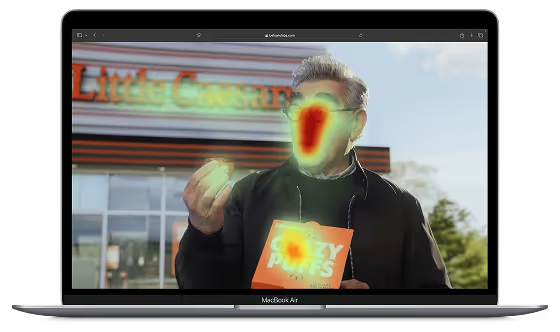Why attention matters in 2025
Your customers are drowning in content. Between endless social feeds, streaming ads, and digital billboards, the average person encounters between 6,000 and 10,000 marketing messages daily. The reality is that only a handful will stick.
That's why smart brands are turning to heatmaps as a visual, data-driven way to cut through the noise. Instead of guessing where people look, heatmaps show you exactly what grabs attention and what gets ignored.
Think of heatmaps as your creative's report card, revealing whether your carefully crafted message actually reaches your audience or gets lost in the visual chaos.
What are heatmaps in advertising?
Ad heatmaps are color-coded visualizations that show where viewers focus their attention when looking at your creative. Red zones indicate high attention areas, while blue zones show spots that barely register.
There are several types of heatmaps marketers use:
- Eye-tracking heatmaps collect real data by monitoring where people's eyes move as they view content. These provide the most accurate attention data but require specialized equipment and test participants.
- Mouse-tracking heatmaps follow cursor movements on websites, based on research showing a strong correlation between mouse position and visual attention.
- Behavioral heatmaps use AI to predict attention patterns without needing live participants. These tools, like Behavio's attention heatmaps, analyze visual elements using algorithms trained on thousands of eye-tracking studies to predict where typical viewers will look.
The beauty of behavioral heatmaps is speed and scale. You can test multiple creative variants in minutes rather than weeks, making them perfect for fast-moving campaign development.
Why brands are turning to heatmaps
Three major shifts are driving the heatmap boom in marketing:
- Rising media costs mean every ad dollar needs to work harder. When a 30-second TV spot costs six figures, you can't afford creative that doesn't connect. Heatmaps help ensure your investment reaches its target.
- There's a swing back from pure performance metrics to brand-building plus attention. Marketers realize that short-term conversion focus often misses the bigger picture of mental availability and brand growth.
- Gen Z and TikTok-era attention spans make visual feedback crucial. With most viewers deciding whether to engage within a few seconds, understanding those critical first moments becomes essential for creative success.
4 ways brands use heatmaps to improve creatives
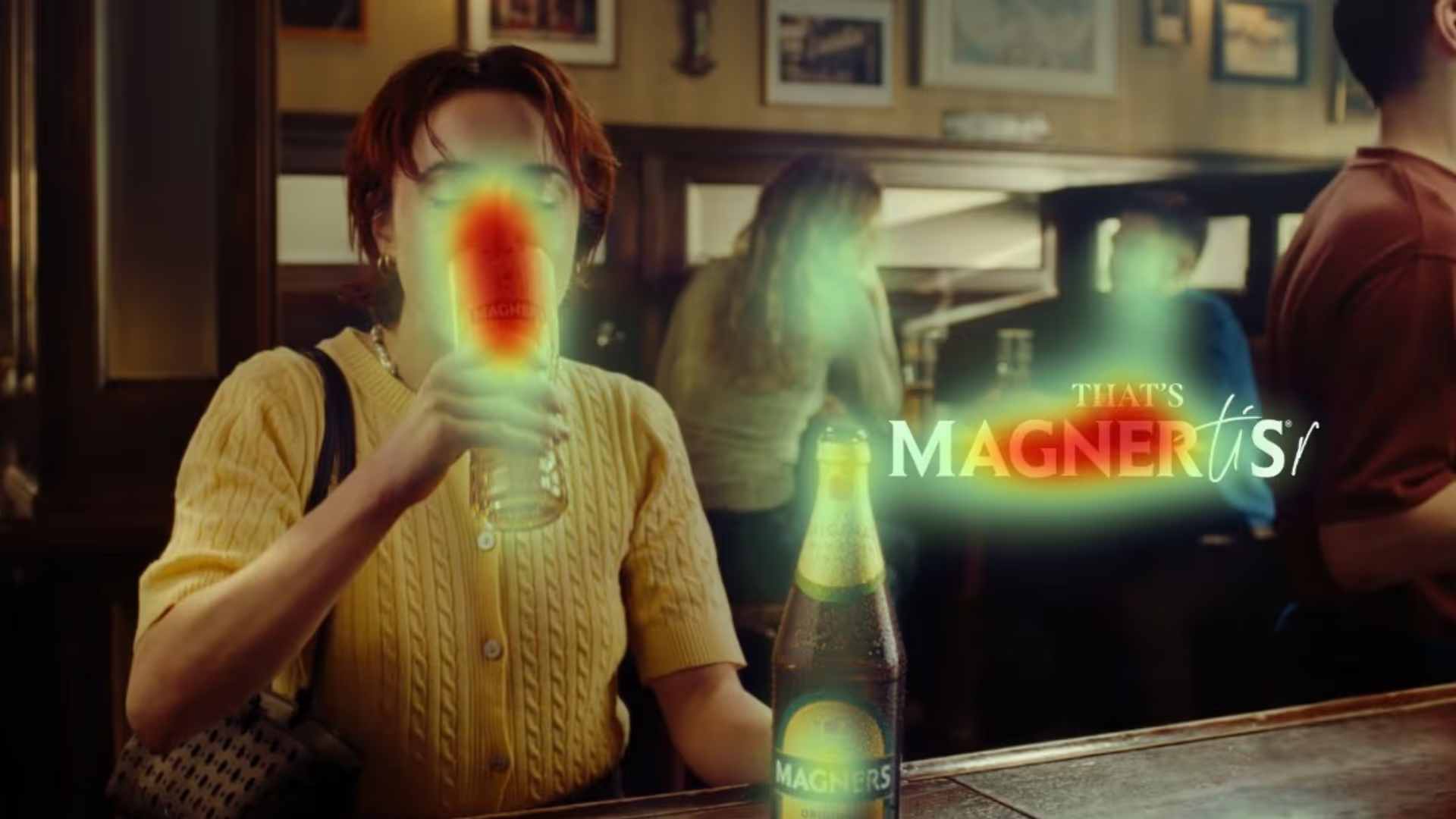
1. Identify focal points & missed opportunities
Ever wonder if people actually see your logo? Heatmaps reveal the uncomfortable truth about what really grabs attention.
Imagine you’re running a beverage campaign and discover that viewers are drawn to the condensation on the bottle instead of your brand logo. The visual “wow factor” is there, but it’s pulling attention away from the branding you want remembered.
Heatmaps help you spot these attention thieves and optimize composition accordingly. Maybe that cute puppy in your pet food ad is perfect, but only if your brand assets sit right next to those adorable eyes where people are naturally looking.
2. Visually compare ad variants
Traditional A/B testing tells you which creative performs better, but heatmaps show you why. Instead of debating whether the red or blue call-to-action button works better, you can see which one actually gets noticed.
This visual evidence becomes powerful when presenting to stakeholders or clients. Rather than arguing about subjective preferences, you can point to data showing that version A captures 40% more attention on the key message than version B.
3. Ensure brand assets get seen
The biggest creative mistake? Late or hidden branding. Many brands save their logo reveal for the end of video ads, but heatmap data shows most viewers have already moved on.
Attention typically peaks in the first few seconds, then drops rapidly. If your brand elements aren't positioned where people are looking during those crucial moments, you're missing your chance to build memory and recognition.
Smart brands use heatmaps to verify their logos, products, and brand colors appear in high-attention zones throughout their creative, not just at the end.
4. Predict real-world ad performance
The most sophisticated brands connect heatmap attention data with downstream metrics like recall, brand lift, and message clarity.
Research shows a strong correlation between attention time and brand memory. Ads that hold attention for more than 2.5 seconds significantly outperform shorter attention spans for building brand awareness.
Picture a fast-food chain using heatmaps to predict which of five campaign concepts would drive the strongest brand recall before spending media budget. If the heatmap winner delivered 23% higher recall in the market, it would validate their attention-based approach.
.avif)
How to start using heatmaps in your ad testing process
Behavio provides behavioral heatmaps specifically designed for ad testing, with results available in hours rather than days. Our AI model, trained on over 20,000 eye-tracking studies, predicts attention patterns for both video and static creatives.
For most marketing teams, the sweet spot is integrating heatmaps into your creative development process early and often. Test concepts before production, compare variants before media buying, and validate final assets before launch.
When you understand where your customers actually look, you can design campaigns that connect rather than compete for attention.
Ready to see what your customers really notice in your ads? Test your next creative for FREE with attention heatmaps and discover where their eyes actually go in those crucial first seconds.





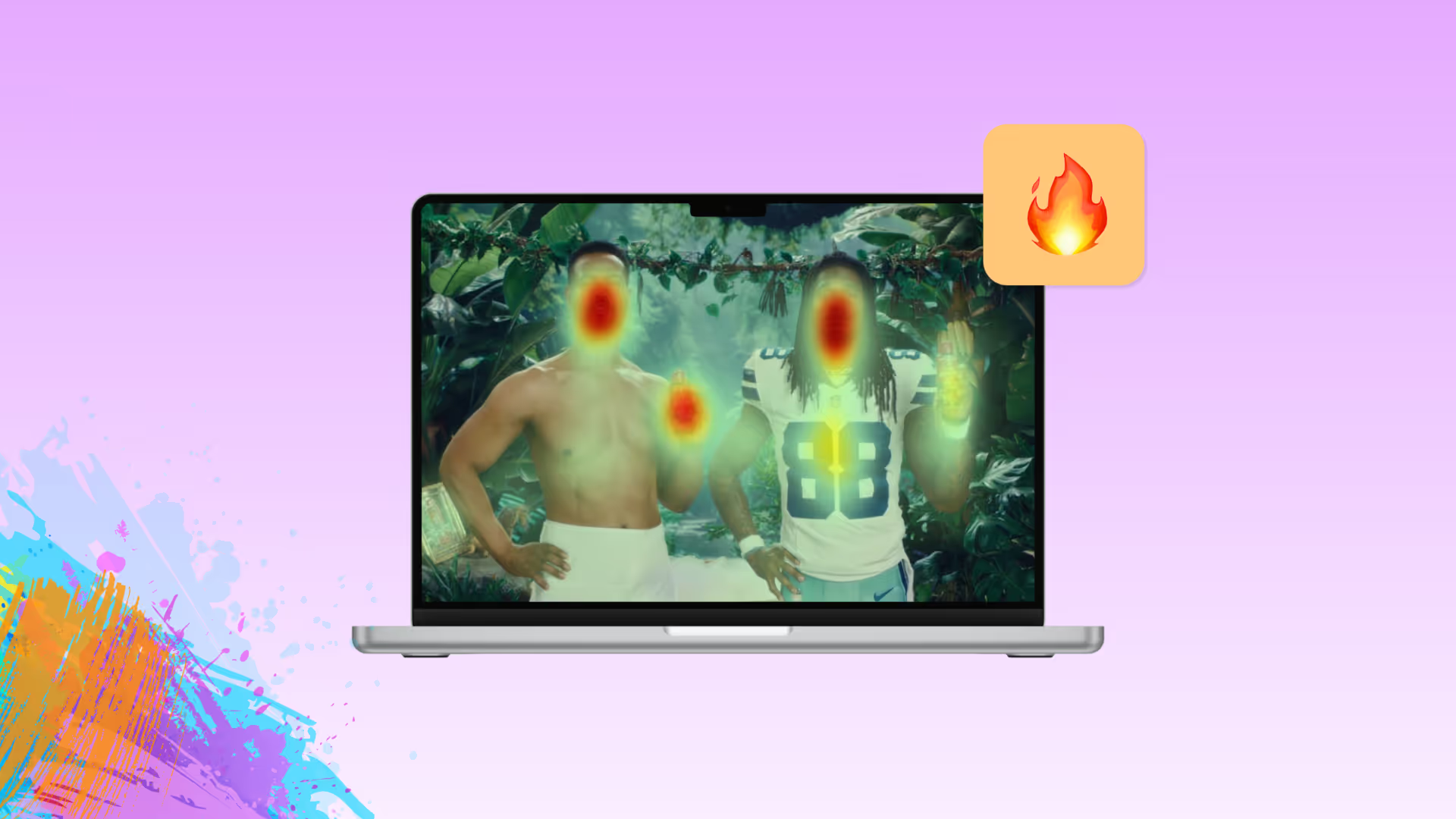

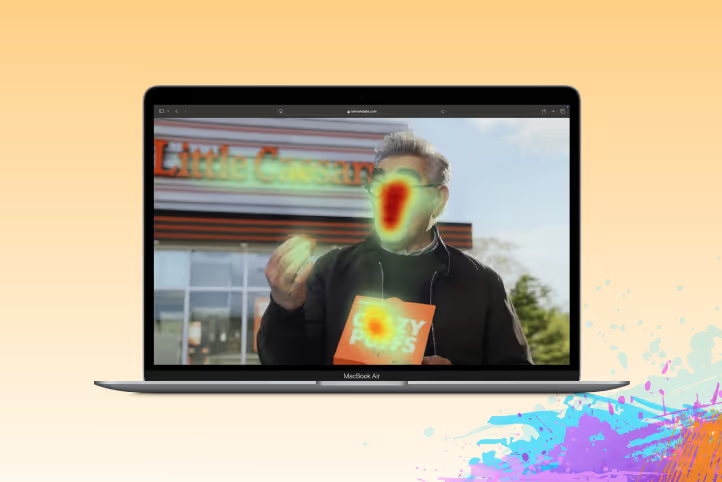

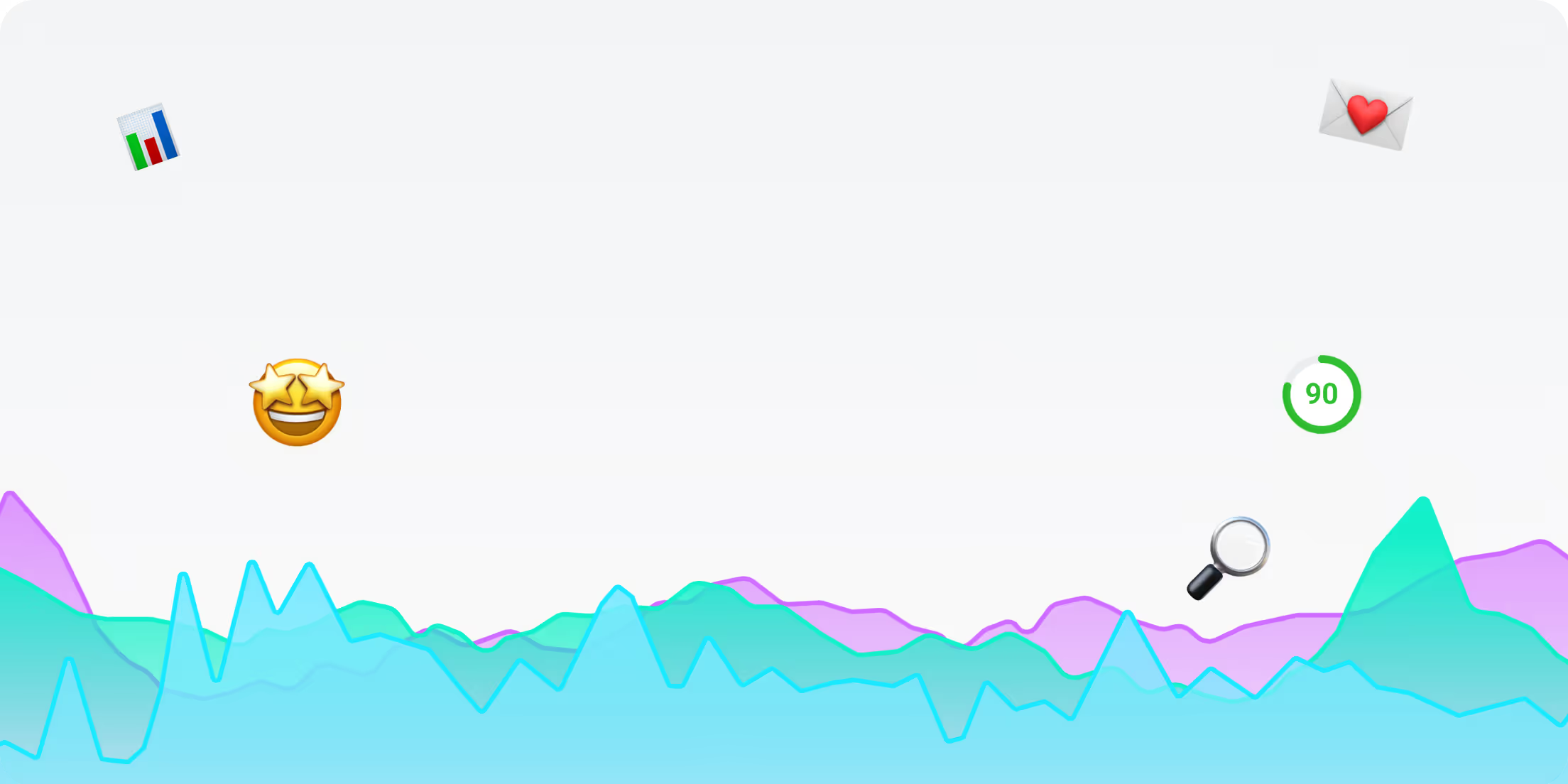
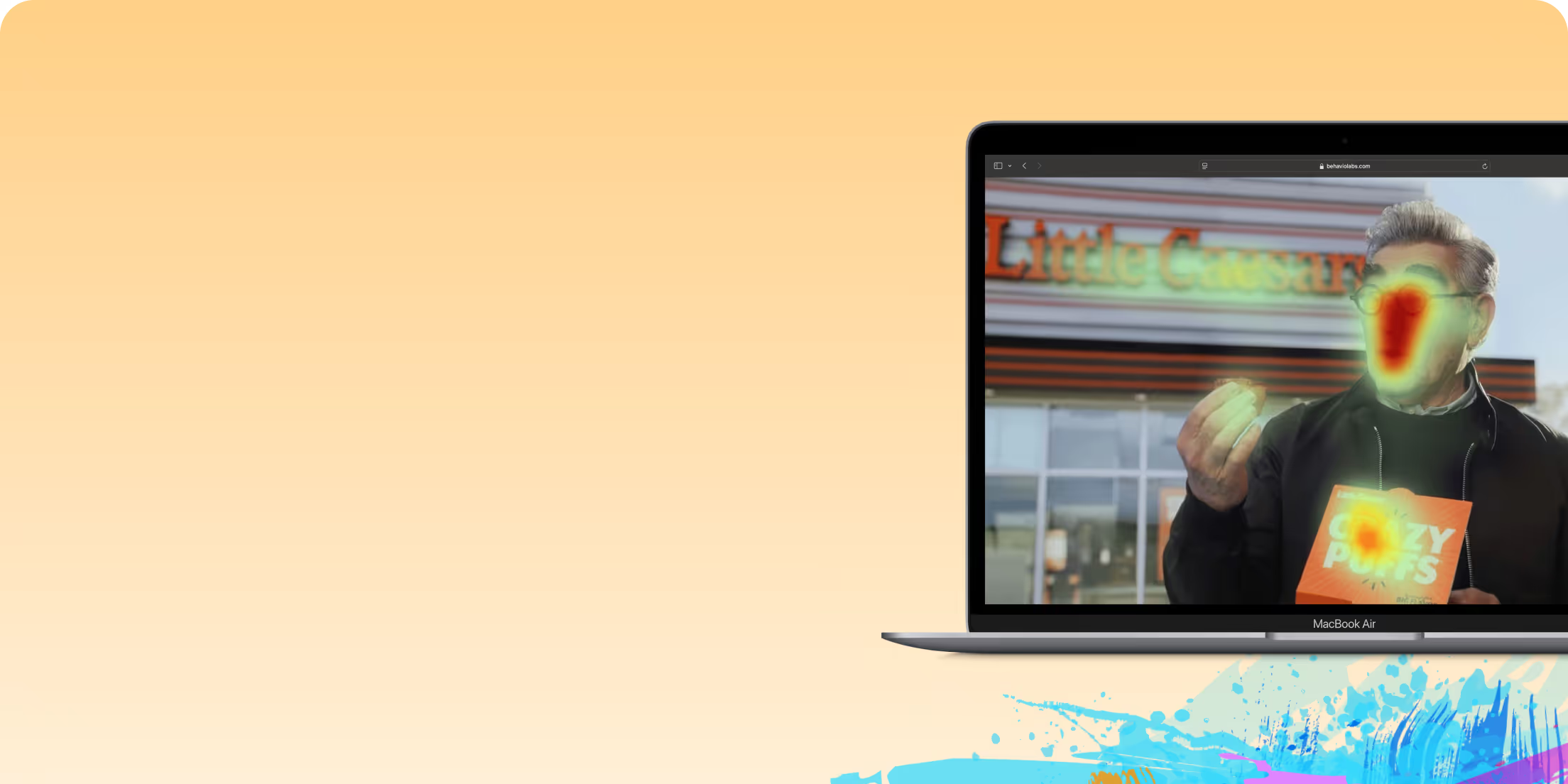
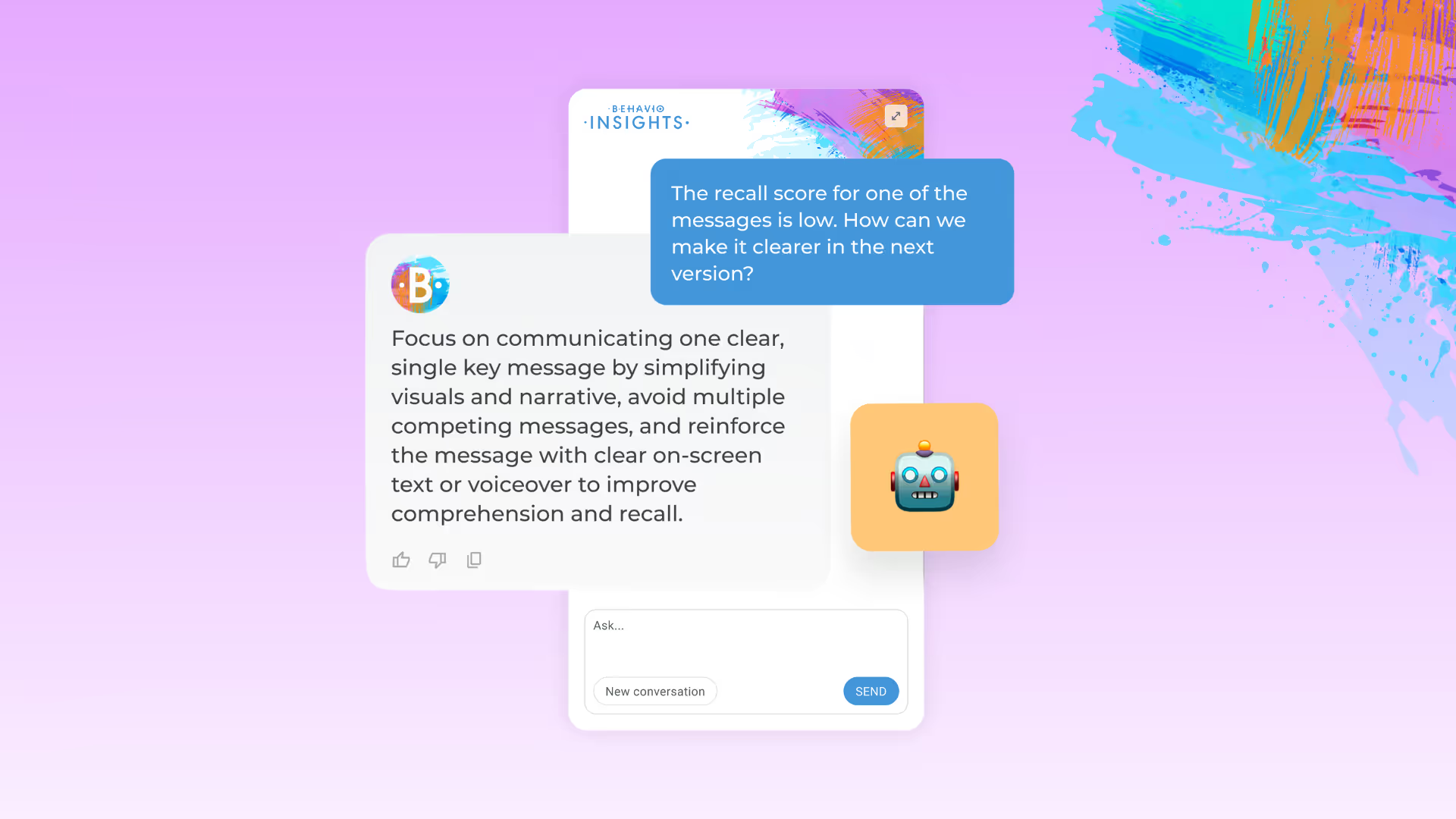
.avif)




